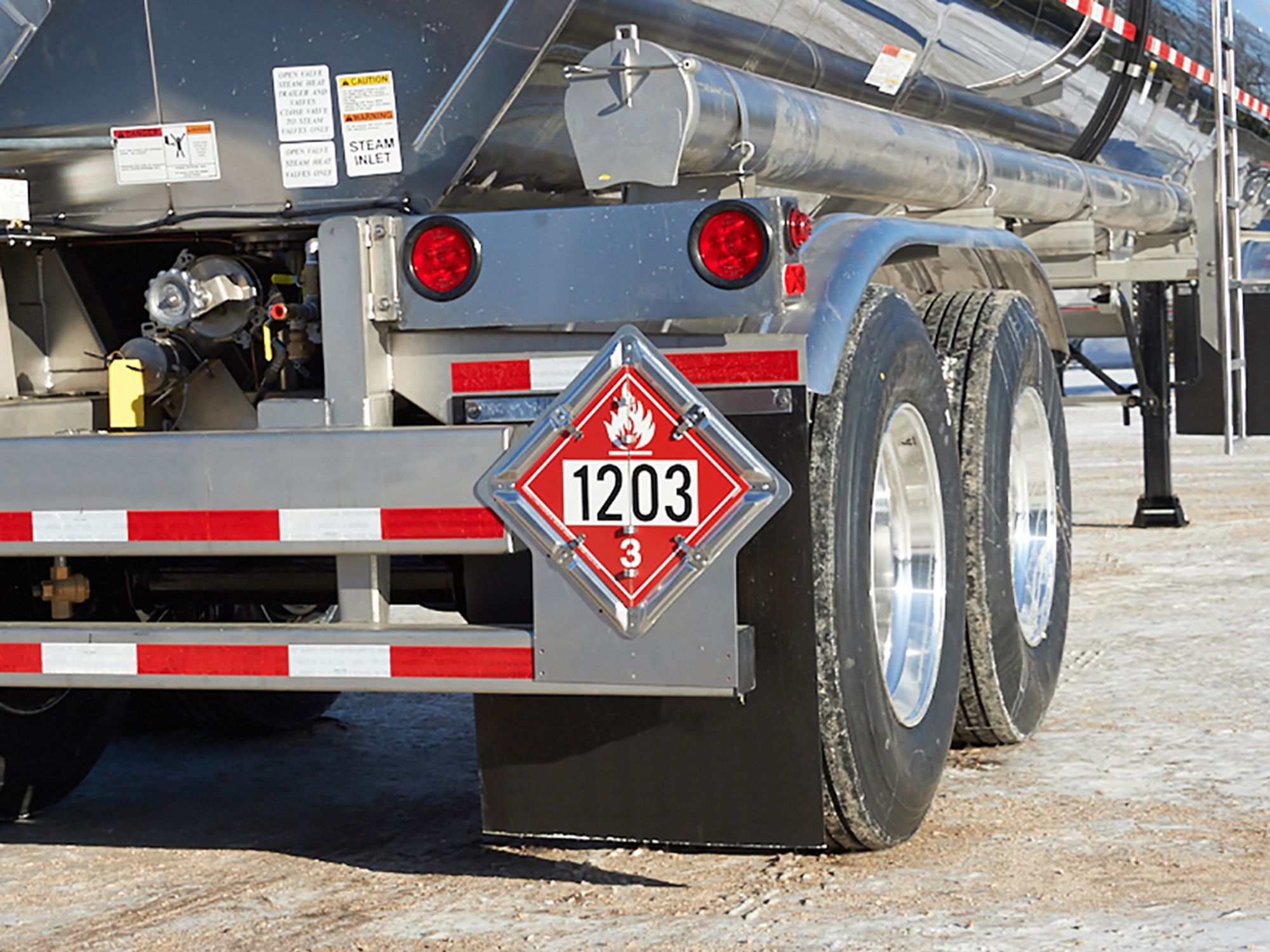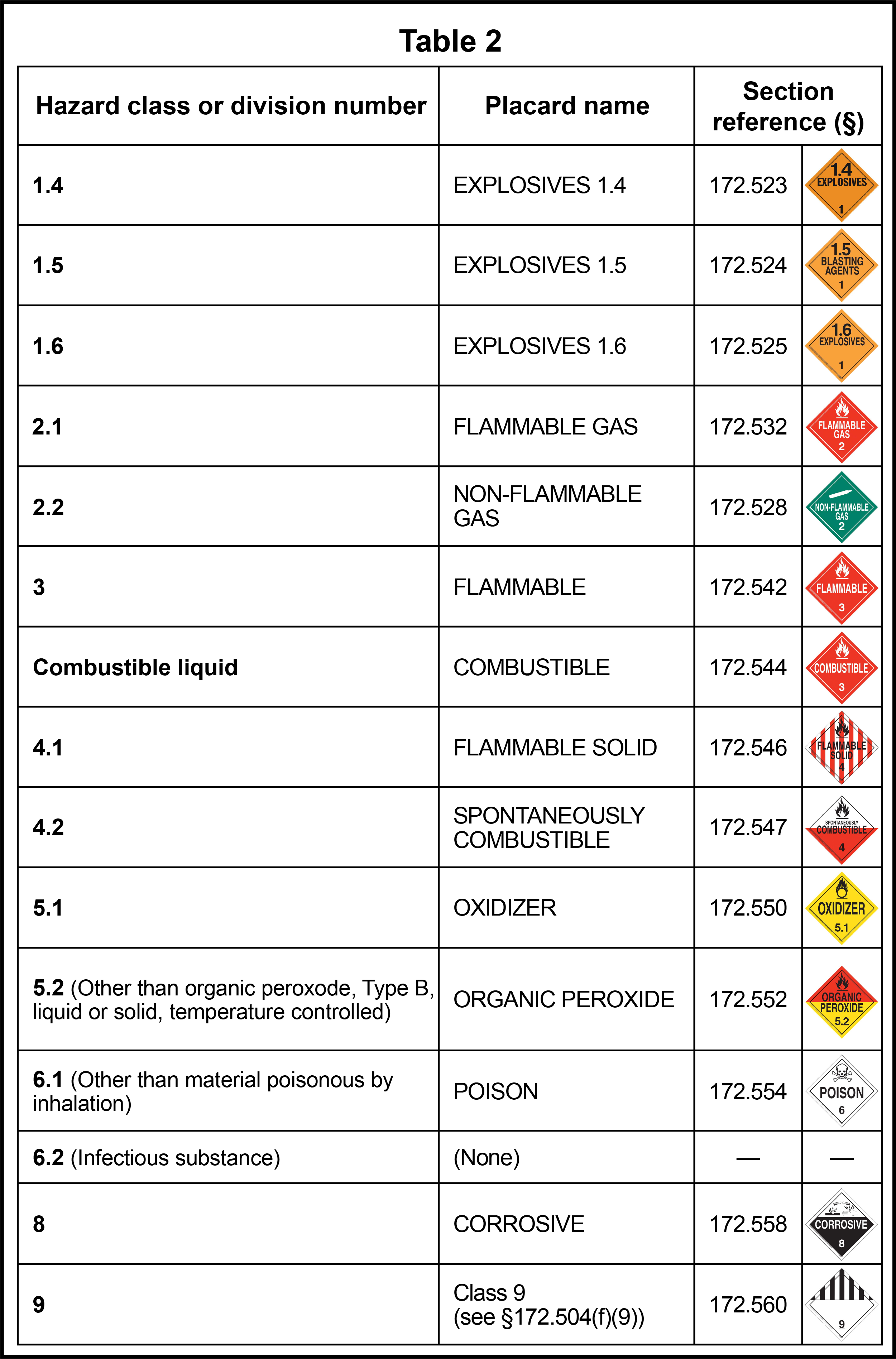Prohibited placarding and placarding requirements

- Placards affixed to equipment or packaging must meet HMR requirements; signs, advertisements, and slogans cannot be used for that purpose.
Prohibited placarding (172.502)
No person may affix a placard to a packaging, a freight container, a unit load device, a motor vehicle, or a railcar unless the material being offered for transportation is a hazardous material, the placard applied represents the hazard of the material being offered, and the placards conform to requirements in the Hazardous Materials Regulations (HMR).
Signs, advertisements, slogans (such as “Drive Safely”), or other devices that could be confused with a prescribed placard are prohibited.
Permissive placarding (172.502)
Placards may be displayed for a hazardous material, even when not required, if the hazardous material is present and the placarding conforms to regulations.
A bulk packaging, freight container, unit load device, transport vehicle, or rail car placarded according to Canada’s Transport Dangerous Goods (TDG) Regulations, the International Maritime Dangerous Goods (IMDG) Code, or the United Nations (UN) Recommendations is allowed.
Placarding tables (172.504)
Placarding requirements vary according to the category of material (hazard class, division, packing group, or description) being transported and type of packaging (bulk or non-bulk) containing the material. Each bulk packaging, freight container, unit load device, transport vehicle, or rail car containing hazardous material must be placarded on each side and each end (with some exceptions) with the type of placards specified in Table 1 or Table 2 of Section 172.504.
To determine what placards are required, one must know:
- The type of packaging (bulk or non-bulk) containing the hazardous material(s);
- The hazard category (class, division, packing group, or description) and subsidiary hazard(s) of the hazardous material(s) present; and
- The weight of non-bulk packages in each hazard category.
The most dangerous categories of hazardous materials are shown in Table 1 of 172.504. Any quantity of material falling within the categories listed in Table 1 must be placarded.

The remaining hazard categories are assigned to Table 2. Any quantity of these materials also must be placarded, but the regulations provide some exceptions under certain conditions.

